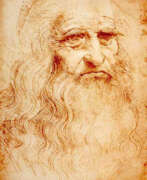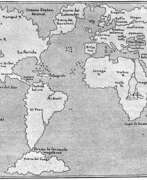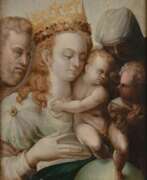Engineers 16th century


Girolamo da Treviso the Younger was an Italian painter whose versatile talent shone brightly during the Renaissance. Born in Treviso, his artistic journey was marked by a profound ability to blend the innovative techniques of the High Renaissance with the rich traditions of Italian painting.
Renowned for his expertise in a variety of subjects, Girolamo's works ranged from religious narratives to mythological scenes, each imbued with a depth of emotion and meticulous attention to detail. His style was characterized by dynamic compositions, a masterful use of perspective, and a vibrant palette that brought his figures and landscapes to life.
Among his notable contributions to the art world, Girolamo da Treviso's altarpieces and frescoes stand out for their artistic and historical significance. These works, preserved in some of the most prestigious museums and churches across Italy, continue to attract art lovers and scholars, captivated by their beauty and the story of their creator.
For collectors and experts in art and antiques, Girolamo da Treviso II represents an intriguing figure whose oeuvre offers a window into the transformative period of the Renaissance. His paintings are not only valued for their aesthetic appeal but also for the insights they provide into the cultural and artistic developments of the 16th century.
To explore the rich legacy of Girolamo da Treviso II and stay informed about the latest discoveries and auction events related to his work, signing up for updates is a must. This subscription will keep you at the forefront of new opportunities to appreciate and acquire pieces by this Renaissance master, ensuring you never miss a chance to add to your collection.


Leonardo da Vinci was an Italian polymath of the High Renaissance, celebrated as a painter, draughtsman, engineer, scientist, theorist, sculptor, and architect. His remarkable abilities and innovative thinking made him an epitome of the Renaissance humanist ideal. Born in Vinci, near Florence, in 1452, Leonardo was educated in Florence by Andrea del Verrocchio, a renowned painter and sculptor. He began his career in Florence, later working in Milan, Rome, and France, where he died in 1519.
Da Vinci is revered for his artistic mastery, technological innovation, and scientific inquiry. Despite having fewer than 25 major works attributed to him, including several unfinished ones, his influence on Western art is profound. His magnum opus, the "Mona Lisa," housed in the Louvre Museum, Paris, is considered the world's most famous painting. "The Last Supper," his most reproduced religious painting, showcases his mastery of dramatic narrative and pictorial illusionism. Both paintings exhibit Leonardo's unique ability to convey complex human emotions and his innovative use of techniques like sfumato and chiaroscuro.
Leonardo's interests extended far beyond fine art. He was a visionary in multiple fields, including anatomy, physics, architecture, and mechanics. His notebooks reveal designs for machines like bicycles, helicopters, and military tanks, centuries ahead of their time. However, due to his diverse interests, he left many projects and paintings incomplete. Leonardo's final years were spent in France, where he continued his artistic and scientific pursuits until his death.
For collectors and experts in art and antiques, Leonardo da Vinci remains a figure of endless fascination. His works not only embody the pinnacle of Renaissance art but also provide insights into the era's scientific and philosophical inquiry. To stay updated on new sales and auction events related to Leonardo da Vinci, sign up for our newsletter. This subscription is a gateway to exploring the rich legacy of this unparalleled artist and inventor.


Galileo Galilei was an Italian naturalist, physicist, mechanic, astronomer, philosopher, and mathematician.
Using his own improved telescopes, Galileo Galilei observed the movements of the Moon, Earth's satellites, and the stars, making several breakthrough discoveries in astronomy. He was the first to see craters on the Moon, discovered sunspots and the rings of Saturn, and traced the phases of Venus. Galileo was a consistent and convinced supporter of the teachings of Copernicus and the heliocentric system of the world, for which he was subjected to the trial of the Inquisition.
Galileo is considered the founder of experimental and theoretical physics. He is also one of the founders of the principle of relativity in classical mechanics. Overall, the scientist had such a significant impact on the science of his time that he cannot be overemphasized.


Agostino Ramelli was an Italian military engineer and mechanic who worked in the fields of fortification and practical mechanics.
Ramelli studied mathematics, mechanics, and engineering under Giacomo di Marignano, who is considered a disciple of Leonardo da Vinci. He first showed his talents as a mechanic during Louis XIII's military campaign by constructing a mine under a bastion.
Ramelli invented many mechanisms that impressed his contemporaries, including their special aesthetic appeal. His most popular creation is the so-called Ramelli Book Wheel, a rotating reading table. Agostino Ramelli positioned his invention as a sleek design that allowed access to several books without having to get up from his seat.
Ramelli wrote and illustrated a book of engineering projects, Le various et artificiose machine ("Various and Artificial Machines"). The book contains 195 designs, over 100 of which are water-lifting machines, such as water pumps or wells, as well as bridges, mills, and so on. This very interesting book for our contemporaries is still published and is still in demand.


Hans Vredeman de Vries was a Netherlandish painter and printmaker, decorative artist, architect and Renaissance engineer.
After studying the works of Vitruvius and Sebastiano Serlio and putting in a great deal of labor himself, Vredeman became known throughout Europe as a specialist in perspective. As an architectural theorist, he was most famous for his varied designs of invented views of cities and buildings shown in carefully considered linear perspective. These were apparently created as models for architects.
In 1575-1586 Hans Vredeman de Vries was appointed city architect of Antwerp and was responsible for the fortifications of the city. He then worked in Hamburg, Danzig, Prague and Amsterdam. He is also known for his 1583 publication on garden design and books with many examples of ornamentation and perspective.
His son Salomon Vredeman de Vries (1556-1604) was also an artist.







